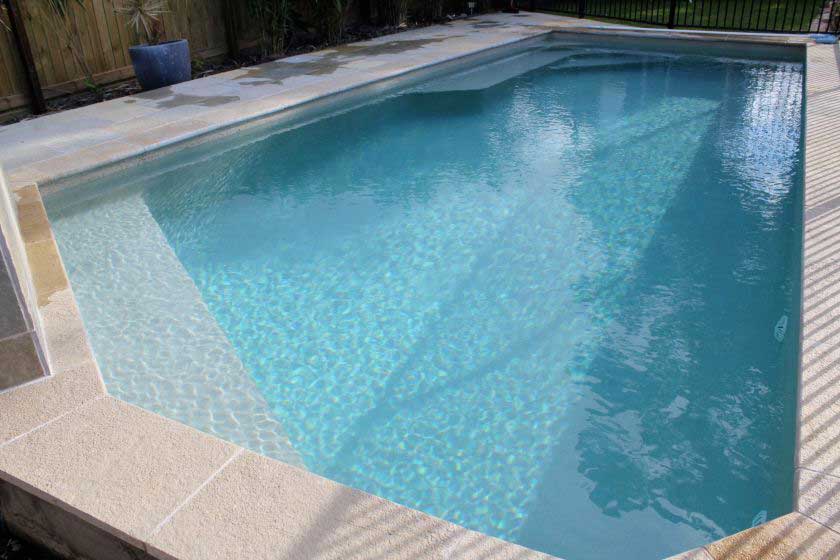Bombora Pools – Pool Tips
A swimming pool plays a significant role in your lifestyle. It can be an aesthetic compliment to your home, a place to spend time with your family, a way to exercise or a reward for yourself.
Pool Tips
Cloudy water?
There are several things that you can easily do to discover why your pool has cloudy water
- Check to make sure the pH levels are in proper range
- Check the pool filter. Clean or replace if needed.
- Check the pool sanitizer’s level. If it’s low, raise the level.
- Call your local Pool serviceman for additional help for chlorine stabilization, alkalinity, calcium hardness and heavy metals.
Test frequently
Depending on your usage, you should test the water frequently. Some users test the pH and chlorine every other day – others test once a week. During heavy usage and summer months, you can perform a daily test. And anytime you notice a change in water quality, get your test kit out and check the water quality.
When to clean, when to replace
Periodic backwashing will remove most dirt from a clean filter; however, over a period of time, grease, oils and scale can attack and build up on the elements. When this occurs, you should clean or replace your filter depending on the type of filter. NOTE: Check the filter if water is murky or water quality decreases.
Water clarifiers
A clarifier is designed to aid efficient filter operation by coagulating most materials that cause cloudy and hazy water. Because the presence of these materials increases the disinfectant demand, the use of a water clarifier can decrease pool maintenance costs.
Why filtration is important
Filtration is the mechanical way to remove visible matter from the water. The filter medium is designed to remove hair, dirt, tiny skin flakes, metal or calcium precipitates and other visible debris that would otherwise cause the water to be hazy and cloudy.
What does “Vacuum to Waste” mean?
When you “Vacuum to Waste” you are pumping the debris you vacuum out of the pool and sending the water to the waste line, and not through the pool filter. This method removes a large amount of water from the pool in a short time, so be sure the pool is full before you begin. Vacuum to waste is used for large amounts of debris and dirt.
The proper way to get rid of algae
First, you must add the algaecide according to the directions. If you don’t add the correct dosage amount, it won’t kill any of the algae. Also know that using the entire bottle of algaecide is ineffective. Not only will you spend additional money, large doses can lead to staining and foaming in your pool.
In addition to properly dosing your water, it is also recommended that the algaecide be added in the morning on a bright, sunny day for best results. Algae grow in the presence of sunlight. Adding algaecide during algae’s best growth time will increase intake of the algaecide and make it more effective. If black algae is present, brushing the algae at least once daily will also help expedite algae removal. Brushing the dead cells away makes the living algae more vulnerable to the algaecide.
Shock Treatment
Pool water composition always includes some undesirable elements that actually contaminate the water and reduce the efficiency of the disinfectant or sanitizer. Materials such as hair spray, suntan oil, cosmetics, perspiration and other organic material react to combine with the chlorine in the water to form “combined chlorine.”
Once “combined chlorine” forms, it acts as a very poor disinfectant, contributing to eye and skin irritations and the forming of unpleasant chlorine odor. Pools with this problem are often inaccurately accused of having too much chlorine.
Routine shock treatment is necessary to destroy combined chlorine compounds and restore the chlorine sanitizer to “free chlorine” efficiency. A pool can be shock treated by adding large doses of chlorine, commonly referred to as superchlorination.
Knock out the chlorine smell
Most pools contain both good chlorine and bad chlorine. The good chlorine is called free chlorine and is capable of killing germs. Bad chlorine, on the other hand, is called “combined chlorine” and is a poor germ killer.
Too much combined chlorine in your pool causes the strong chlorine odor. When the combined chlorine level reaches 0.2 ppm or more, it is time to shock your water. Shocking will eliminate the odor.
How long before I can jump in?
With the exception of superchlorinating (which requires waiting until the chlorine level drops to recommended levels), you generally can use your pool when the chemical is dispersed. Fifteen minutes to one hour should be about right.

